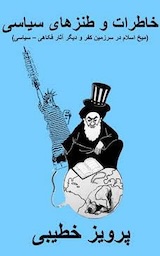The New Yorker:
How Coca-Cola came to rule the world.
By E. J. Kahn, Jr.
Long before the United States put its first space vehicle into orbit, foreign cartoonists, from Argentina to the Transvaal, had assumed that the American satellite would be built along the familiar lines of a Coca-Cola bottle. In their eyes, as in the eyes of many people abroad, Coca-Cola is a fluid that, like gasoline, is indispensable to, and symbolic of, the American way of life. The two liquids, indeed, are often thought of as compatible, even though gasoline is one of the few solutions around that have not yet been mixed with Coke. (Gas in a Coke bottle, however, makes a first-rate Molotov cocktail.) An English cartoonist has depicted a United States Air Force plane being fuelled in flight by a pair of aerial tankers, one furnishing gas to the engines, the other Coca-Cola to the crew. A German variation on the theme shows a filling station with two pumps offering similar nourishment—the hose of one attached to an American car, that of the other to its driver’s mouth. (More transactions at service stations in the United States involve Coca-Cola than motor oil.) On its own, without gas, Coke is so widely regarded as a symbol of America that an Italian cartoonist once portrayed Uncle Sam himself as a top-hatted, star-spangled bottle of it. Among the other exponents of the theory that Coca-Cola is uniquely representative of the United States are the officials of the Coca-Cola Company, one of whom is known to have described the drink, which is ninety-nine per cent sugar and water, as “the most American thing in America.”
The acceptability of Coca-Cola in any region is apt to depend on the region’s political orientation toward the United States. For the last ten years or so, our foreign critics have taken to identifying the policies of our State Department with those of the Coca-Cola Company, and have conjured up a new type of imperialism, which they call Coca-Colonization, or Coca-Colonialism. Hitler drank Coke, but while Germany was at war with the United States, the official Nazi line was that the beverage was a menace to European civilization. In due course, this became the official Communist line, while West Germany became practically a Coca-Cola Reich. Currently, it is lapping the stuff up at the rate of over a billion bottles a year, to the joy of the hundred and eleven West German bottling plants that turn it out. In the Lebanese revolt last spring, two of the first buildings in Beirut to be assaulted by the rebels were the library of the United States Information Agency and the Coca-Cola bottling plant.
Go to link










Comments